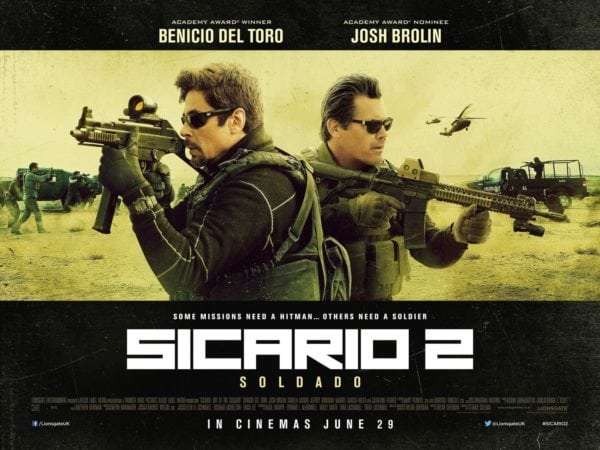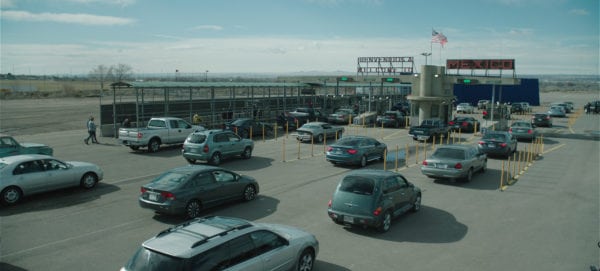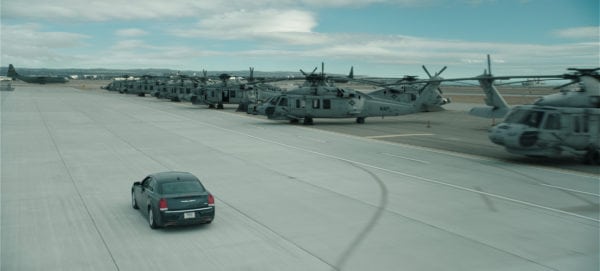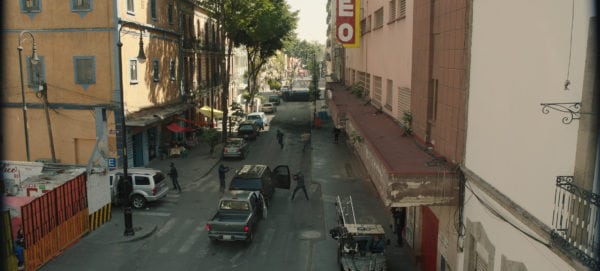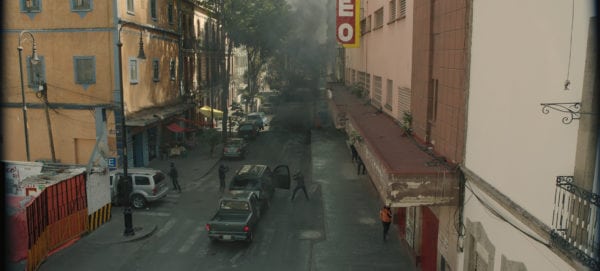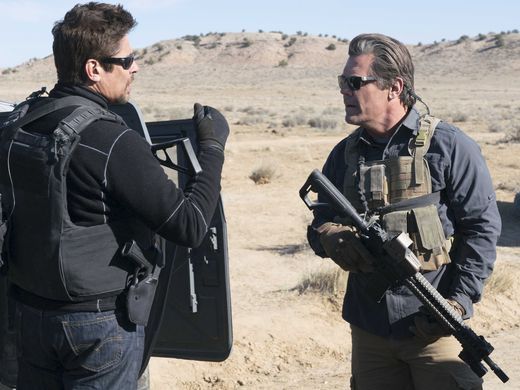Tai Freligh interviews Alexandre Lafortune, VFX Supervisor for Sicario: Day of the Soldado…
Sicario: Day of the Soldado continues the story started in Denis Villeneuve’s critically acclaimed Sicario, this time following the black ops team helmed by Matt Gaver (Josh Brolin) and Alejandro (Benicio Del Toro) as they attempt to instigate a civil war amongst Mexico’s violent cartels. Much like its predecessor, Sicario 2 is set to deliver raw tension and gorgeous visuals. It was up to Rodeo FX to construct realistic, brutal effects that lent themselves to a bleak, stylized directorial vision. VFX Supervisor Alexandre Lafortune spoke to Flickering Myth’s Tai Freligh about Sicario 2, his philosophy on special effects and some fun speed round questions.
What types of special effects did you do for Sicario 2?
We delivered various types of visual effects on Sicario : Day of the Soldado, including muzzle flash, bullet impacts, full CG environments and matte paintings, and also military and civil vehicles to populate the shots. There is one sequence that showcases almost every kind of visual effects we did for the movie, involving a suicide bomber who attacks a Walmart-esque superstore. For this long, continuous shot, we had to integrate a whole building facade, which meant a lot of matte painting. We extracted characters from different plates to gather them in the main plate photography. In addition to this, we rebuilt the full interior of the store, from the ceiling to the shelves full of products, all using 3D modeling. And then our team destroyed it all, creating three explosions that blow the whole place up; afterwards the camera lingers in our destroyed version of the store, letting the audience reel from the terrible aftermath.
Do you have a philosophy on what the right amount of visual effects is for a film?
We work for the director and the filmmaking team. Our goal is to capture the parts of a director’s vision that they couldn’t achieve through practical effects on set. As such, I really think the right amount is the director’s amount, whether that be seamless world building or constructing deadly drones and military vehicles.
How closely do you work with the costume/makeup department to create effects?
To be honest, we rarely work with the costume/makeup departments to create effects, and it was not needed in this movie. That said, we did have to enhance the wounds of the characters by adding small details so that holes in the flesh look more realistic and gory, amplifying the great work of the makeup department.
Tell us about some of the VFX you created for Sicario 2 that the average viewer wouldn’t realize was a special effect?
ALL of them! That’s what we were mandated to do. It was all about creating invisible visual effects on the movie to enhance its gritty, war genre feel and make it more immersive. For instance, just like in the original Sicario, there’s a scene where a convoy crosses the US-Mexican border. We had to populate the scene by adding CG civil and military vehicles. We also had to extend the physical elements of the set by adding buildings, surveillance settings, lights and fences, making the exterior location bigger, but also tenser and claustrophobic. In the end, you can’t tell what’s real and what’s not!
What projects do you have coming up next besides Sicario 2?
I’m currently working on The House with a Clock in its Walls, which is a completely different type of movie. I like to be able to jump from one type of visual effects to another. Not to spoil anything, but you can expect to see a dark children’s fantasy filled with magic, monsters and flying books!
Speed Round:
How do you survive the zombie apocalypse?
I’d take shelter in a bunker with a lot of movies, a lot of food and an axe!
VFX for TV or movies?
Movies! I’ve worked on a lot of series and TV movies, but, much like in advertising, the production pace can feel rushed, and you don’t always have enough time to polish your shots, which was a bit frustrating. With movies, even though we still have deadlines, we have more time to do what we want.
Best movie of all time in terms of use of VFX?
There are a lot! But I’d say that The Matrix is the most striking to me. When it was released in 1999, it was so new and refreshing in terms of VFX. The bullet effect where we see Neo avoiding gunshots on the roof, this was exceptional at the time. It was like breaking time and space, travelling to another dimension, where everything went slow motion.
Special effect that you wish you had created, or a project you wish you could have worked on?
I wish I could have worked on War for the Planet of the Apes. The VFX that Weta Digital did for the film were absolutely incredible. I think the way they used motion capture performances created animal characters whose performance was so believably close to human behavior. I think it just speaks to the success of the visual effects that, in spite of how much is done with CG and FX, you never question any of what’s happening throughout the movie.
If not doing special effects, what would your career be?
I’d be drawing cartoons and illustrations! I’ve always loved to draw, it’s what drove me to what I do today.
We thank Alexandre for taking the time to answer our questions. You can find Rodeo FX on all social media channels and their website.
Rodeo FX was originally founded in 2006 in Montreal, and in twelve subsequent years has grown from 4 people working in a single studio to a 500-employee collective spread across studios in three countries. In film, their fingerprints can be seen on Oscar winners like Bladerunner 2049 and Birdman, blockbusters like It and Jumanji: Welcome to the Jungle, and even smaller productions like Enemy and The Shack. They’ve also worked on numerous seasons of Game of Thrones and Black Flag, along with the debut season of Syfy’s Krypton.
Sicario 2 VFX Before & After stills courtesy Rodeo FX.
Tai Freligh is a Los Angeles-based writer and can be found on Twitter.
(article originally appeared on Flickering Myth – read other articles HERE)
